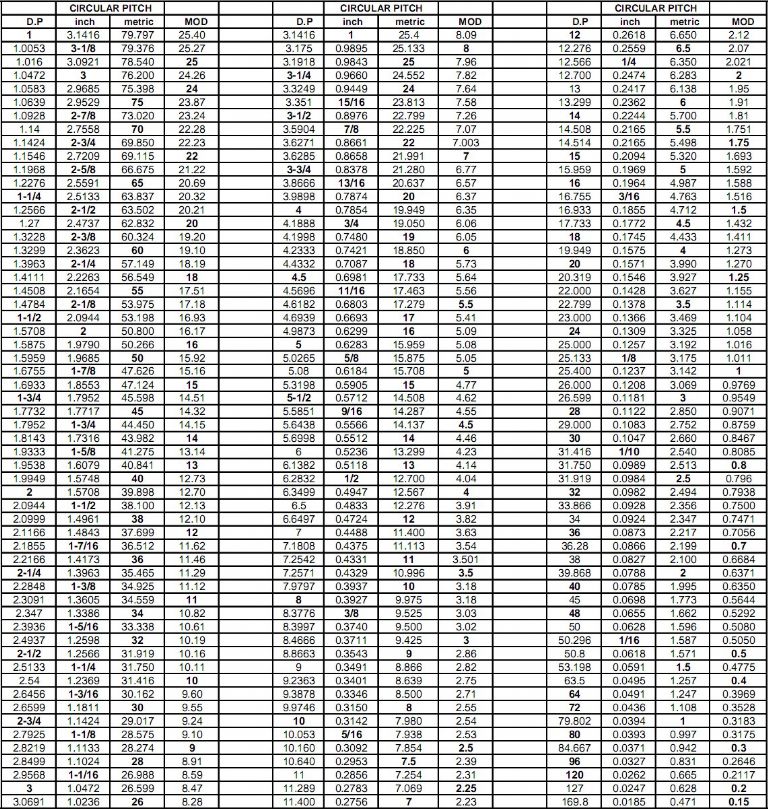I will be looking to do it on the lathe. Seem to be so busy nowadays, so much to do, so little time to do it
Thanks to all of you for the references.
I've saved Johns chart to my pooter, a nice timesaver
It's important that the worm and wheel only mesh on the flanks etc. :noted
Keith your post is a gold nugget I needed, breaking the process down into simplified chunks and going back to the original cog which is all many amateurs have with which to start a wormgear job
To get the DP, just add 2 to the tooth count and divide by the outside diameter
of the gear. So, 42 divided by 3.49inches is 12.
Ady – assuming that you're looking at the bull gear on an M type lathe – and it's the same as the one on mine, then the dp of the bull wheel is 14dp – common to the change wheels as well. Now 14dp has 14 teeth to every 1 inch of pcd or every 3.142 (pi) inches of pitch circle circumference. So the circular pitch is pi/14 = 0.2244 inches which makes the tpi (reciprocal of pitch) you need for the worm to be 4.4563 (tpi). The diameter of the worm doesn't affect the pitch or tpi you need, but will change the helix angle, so you can choose the diameter which gives you the best helix angle for your application.
(The helix angle in particular was an unknown in my head)
Now I can make a start
Edited By Ady1 on 09/10/2015 11:10:11
Ajohnw.





